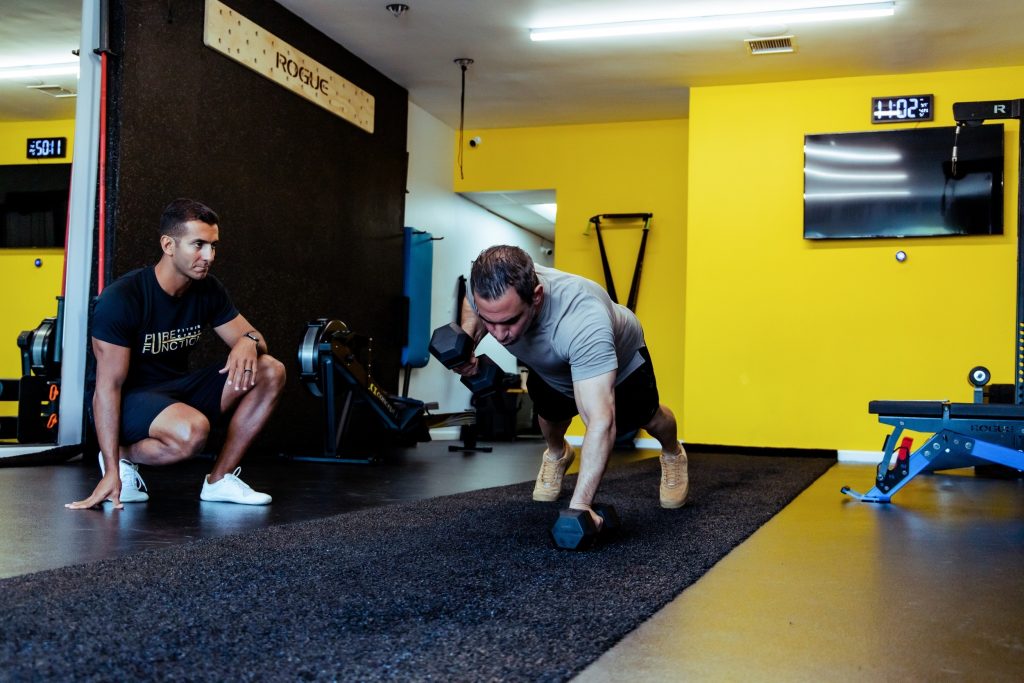What’s the best type of training for weight loss?

Resistance training is one of the best ways to lose weight because it offers several advantages that can be highly effective for weight loss:
1. Increased Muscle Mass: Resistance training helps build and maintain muscle mass. Muscle is metabolically active, meaning it burns more calories at rest than fat. The more muscle you have, the higher your resting metabolic rate, which makes it easier to maintain a healthy weight.
2. EPOC (Excess Post-Exercise Oxygen Consumption): After a resistance training workout, your body continues to burn calories to repair and recover. This effect, known as EPOC or the “afterburn,” can lead to additional calorie expenditure for hours or even days post-workout.
3. Fat Loss and Body Composition: While cardiovascular exercise primarily burns calories during the activity, resistance training helps improve your body composition. It reduces fat mass and replaces it with lean muscle mass, leading to a more toned and lean appearance.
4. Metabolic Rate: As you gain more muscle through resistance training, your basal metabolic rate (BMR) increases. This means you burn more calories even when you’re at rest.
5. Increased Strength: Resistance training can enhance your overall physical strength and fitness, making it easier to engage in other physical activities and burn more calories.
6. Insulin Sensitivity: Resistance training can improve insulin sensitivity, which helps regulate blood sugar levels. This can be particularly beneficial for individuals with insulin resistance or diabetes.
7. Injury Prevention: Building strength in muscles and joints can help prevent injuries, allowing for more consistent and effective exercise over the long term.
With that said , it’s not safe to start lifting too heavy weight in the beginning also Stability and balance training are crucial to master before lifting heavier weights because they form the foundation for safe and effective strength training . Here’s why focusing on staiblity training before lifting heavier weights is important:
1. Injury Prevention: Developing stability and balance helps prevent injuries during weightlifting. It enhances your body’s ability to maintain proper form and alignment, reducing the risk of muscle strains, joint injuries, and falls.
2. Proper Form: A stable and balanced foundation allows you to execute weightlifting exercises with correct form. Proper form is essential for targeting the right muscles, preventing compensation patterns, and maximizing the benefits of the exercise.
3. Muscle Activation: Balance training often engages smaller stabilizing muscles that are essential for joint support and movement control. These muscles play a significant role in heavy lifting, helping distribute the load effectively and protecting your joints.
4. Core Strength: Stability and balance exercises often require core engagement. A strong core is essential for transferring force between your upper and lower body during weightlifting movements, providing the strength and stability needed for heavy lifts.
5. Functional Strength: Stability and balance exercises enhance functional strength, which is the strength required for daily activities and sports. This translates to better overall physical fitness and injury resilience.
6. Confidence: Mastering stability and balance provides confidence in your physical abilities. Confidence is key when progressing to heavier weights, as it can help you push your limits safely and effectively.
Some common stability and balance exercises to include in your training routine are single-leg exercises, stability ball exercises, balance board exercises, and core stabilization exercises like dead bug, bird dog …
Before attempting heavy weightlifting, it’s advisable to work with a qualified fitness trainer who can assess your current abilities, provide guidance on improving stability and balance, and design a progressive strength training program that aligns with your goals and readiness. Starting with lighter weights and gradually increasing the load as your stability and balance improve is a safe and effective approach.
It’s important to note that while resistance training is highly effective for weight loss, it’s best when combined with a well-rounded fitness program that includes cardiovascular exercise and a balanced diet. The combination of these factors, including a caloric deficit, can lead to successful and sustainable weight loss. It’s also advisable to consult with a fitness professional or healthcare provider to create a safe and effective exercise plan tailored to your individual goals and needs.
to lean more about beef it’s of resistance training for weight loss check outhttps://blog.nasm.org/resistance-training-for-weight-loss